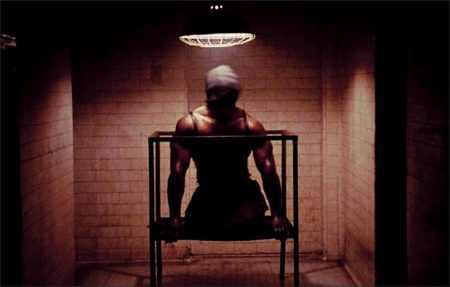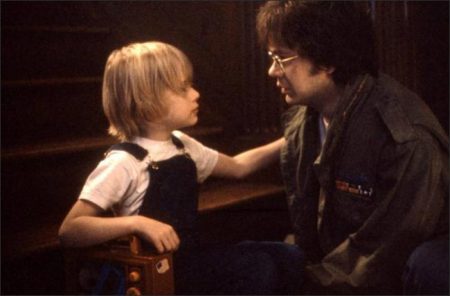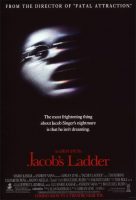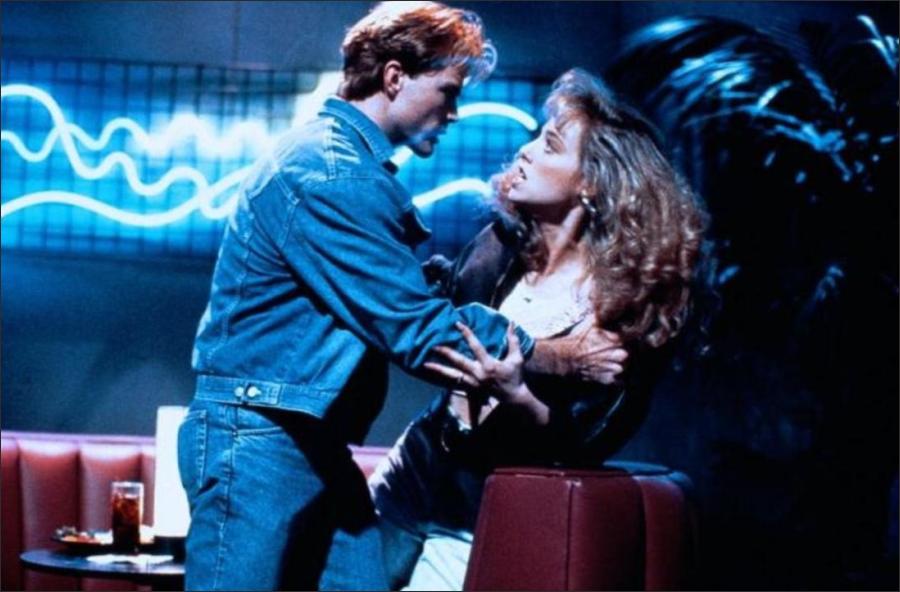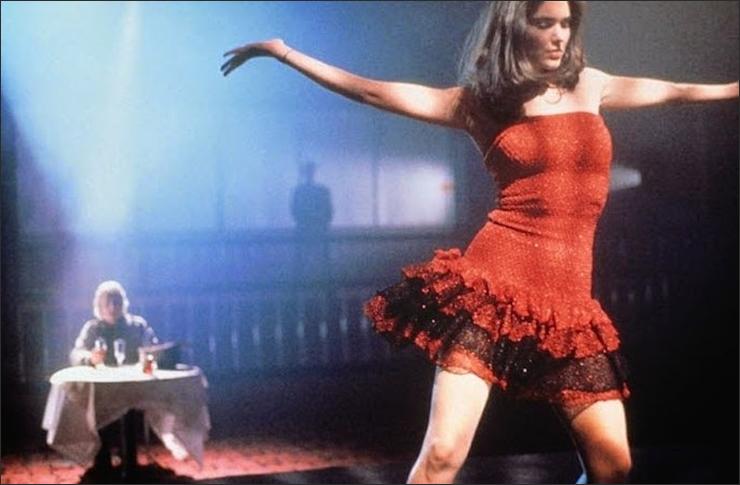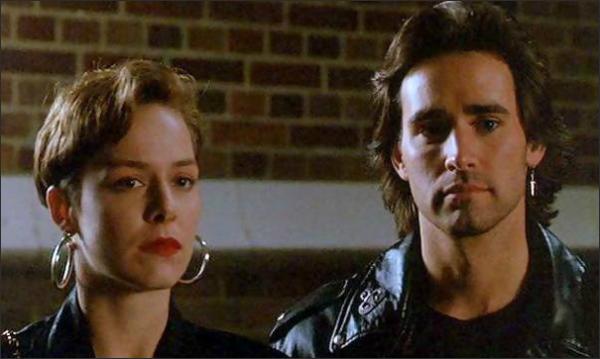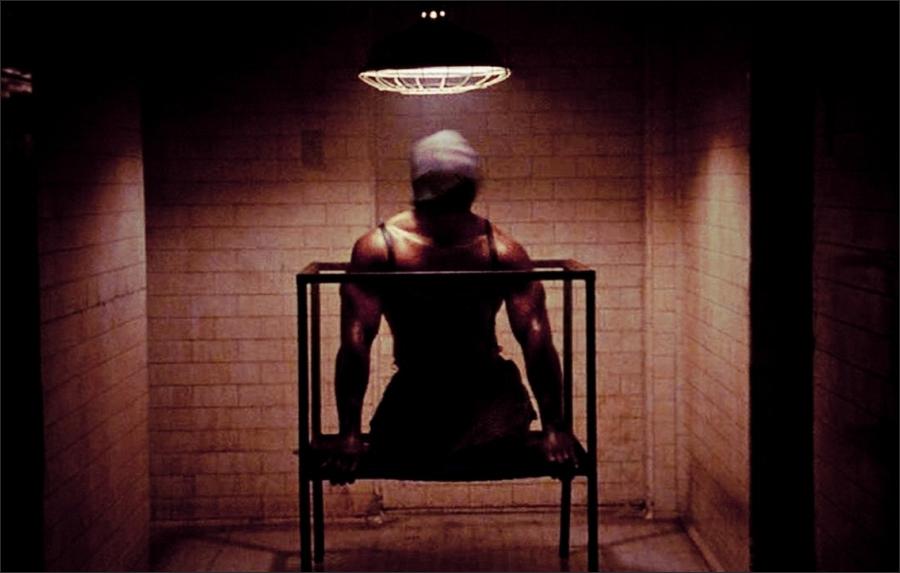Taglines: The most frightening thing about Jacob Singer’s nightmare is that he isn’t dreaming.
Jacob’s Ladder movie storyline. New York postal worker Jacob Singer is trying to keep his frayed life from unraveling. His days are increasingly being invaded by flashbacks to his first marriage, his now-dead son, and his tour of duty in Vietnam. Although his new wife tries to help Jacob keep his grip on sanity, the line between reality and delusion is steadily growing more and more uncertain.
Jacob’s Ladder is a 1990 American psychological horror film directed by Adrian Lyne, written and produced by Bruce Joel Rubin and starring Tim Robbins, Elizabeth Peña, and Danny Aiello. The film’s protagonist, Jacob, is a Vietnam veteran whose experiences prior to and during the war result in strange, fragmentary flashbacks and bizarre hallucinations that continue to haunt him. As his ordeal worsens, Jacob desperately attempts to figure out the truth.
Jacob’s Ladder was made by Carolco Pictures ten years after being written by Rubin. It drew from several inspirations for its story and effects, including the short film An Occurrence at Owl Creek Bridge and the paintings of Francis Bacon. Though only moderately successful upon release, the film garnered a cult following and became a source of influence for various other works such as the horror franchise Silent Hill. A loose remake was announced to be in works by LD Entertainment.
FJacob’s Ladder: Adrian Lyne Met A Metaphysical Challenge
For much of the past decade, Bruce Joel Rubin’s “Jacob’s Ladder” has been regarded as one of the great unproduced screenplays. In an influential story about unfilmed scripts that was published several years ago, American Film magazine called it “one of the very few screenplays. . . with the power to consistently raise hackles in broad daylight.”
Now someone has dared to commit this complex metaphysical thriller to celluloid. Tim Robbins, the rookie pitcher of “Bull Durham,” has the central role: a Vietnam veteran whose nightmarish post-war visions in Brooklyn have put him in mental limbo.
Adrian Lyne, the British director who received an Oscar nomination for 1987’s sleeper hit, “Fatal Attraction,” turned out to be the filmmaker with the commercial clout necessary to take on the project. It opens at several theaters tomorrow – the same day Rubin’s original script will be published by Applause Theater Book Publishers, along with a lengthy essay by Rubin about how the movie came to be.
“It’s certainly one of the best scripts I’ve ever read,” said Lyne by phone yesterday from Los Angeles. “While I was reading it I found it an incredible page-turner – which is my only criterion really for whether I want to make a movie. It’s also fairly radical stuff that needs a lot of involvement on the part of the audience.”
Indeed, half an hour into the “real” story of “Jacob’s Ladder,” we’re asked to ponder whether everything we’ve seen so far is a dream. Lyne and Rubin deftly take us in and out of Robbins’ hallucinations, repeatedly forcing a reassessment of all that has happened.
“It does demand hanging in there, some intellectual involvement,” said Lyne. “Hopefully audiences are ready for that; I get the feeling that the sequels didn’t really work last summer. I love movies that really put you through it, that give you your seven bucks’ worth.”
He thinks he has the right actor in Robbins, “somebody who’s vulnerable, who’s so childlike and funny you want to hug him.” For similar reasons, the only other actor he seriously considered was Tom Hanks, who ended up starring in the movie Lyne turned down in order to direct this one: “The Bonfire of the Vanities.”
The script for “Jacob’s Ladder” began in 1980, with a dream Rubin had about being trapped in a subway. In his essay, Rubin writes that the story then “came out of my head almost as if I were dreaming it again… Nothing I had written in the past (including a 1973 script that became Natalie Wood’s last movie, `Brainstorm’) was so dark, so primal, so disturbing.”
Although Jewish by birth, Rubin had traveled and investigated several other religions, even living in a Tibetan monastery for three months. He acknowledges that the script is inspired as much by “The Tibetan Book of the Dead” as it is by the biblical tale of Jacob’s ladder and by Robert Enrico’s Oscar-winning 1962 film of the Civil War story, “An Occurrence at Owl Creek Bridge” – which also happens to be one of Lyne’s favorite movies.
At one point the screenplay detours into a discussion of the American government’s drug experiments on soldiers. Lyne said that part of the inspiration for this material was Martin Lee and Bruce Shlain’s book, “Acid Dreams: The CIA, LSD and Sixties Rebellion,” but he also points out that the movie is not intended as a documentary: “Nothing in the book suggests that the drug BZ – a super-hallucinogen that has a tendency to elicit maniac behavior – was used on U.S. troops.”
For years, Rubin got more compliments than offers to film this heady mixture of politics, religion and horror. The script first went to Universal Pictures’ Thom Mount, who said he loved it, although it was not for his studio. Sidney Lumet and Michael Apted wanted to direct it, and Ridley Scott was almost committed to it shortly after he finished “Blade Runner.” Then the American Film story broke and helped to turn it into a cult script.
“It actually did seem to serve as a challenge to Hollywood, a cinematic dare,” Rubin writes. But still no one wanted to invest money in it, and his other scripts, including “Ghost” – which recently became the top-grossing film of 1990 – were deemed “too metaphysical.” His agent told him that “Hollywood does not make ghost movies.”
Rubin finally got a break with his script for Wes Craven’s 1986 thriller, “Deadly Friend,” and Paramount picked up the rights to “Ghost.” Then an agent sent “Jacob’s Ladder” to Lyne, who was planning to make `Bonfire.”
“I had read `Bonfire’ and loved it, but I felt more strongly about this script, even though there was a much bigger risk factor,” said Lyne. “I can see why people didn’t want to make it for so long. It reads like a novel, and it’s very intimidating because it’s written so descriptively. Bruce had these very literal images of heaven and hell that I didn’t know how to bring off. How do you introduce a character with horns? It would have brought the house down.”
Eventually Lyne replaced many of these biblical allusions with less literal imagery. H.R. Giger of “Alien” fame was one inspiration, but so was Francis Bacon, whose paintings suggested “a blurred, tormented look.” Instead of a biblical hell, Lyne introduced a horrifying hospital sequence, cluttered with “the human debris of the (Vietnam) war because that’s what Jacob is going through.”
Lyne made other changes, introducing one character and reducing the impact of another role, but he was committed to the uncompromising ending, which he regards as “the one sacred feature of the script.”
“Jacob’s Ladder” was all set to go at Paramount, where “Ghost” was being shot and where “Fatal Attraction” and Lyne’s “Flashdance” had been filmed. But the Paramount regime changed, executives expressed doubts about the ending and the episodes in Vietnam, and the deal fell through.
Then Carolco, the company that made “Angel Heart” and “Total Recall,” came in and saved the picture from being put on the shelf again. Lyne said Carolco did not interfere or ask for changes; he ended up with the film he wanted to make. And he’s prepared for it to be as controversial as the script.
“People will disagree about it, some will be moved, and some will want to retrace their steps,” he said. “But the advance reviews are the best I’ve had, and I’ve had some tough times with critics.”
Jacob’s Ladder (1990)
Directed by: Adrian Lyne
Starring: Tim Robbins, Elizabeth Peña, Danny Aiello, Matt Craven, Pruitt Taylor Vince, Jason Alexander, Patricia Kalember, Eriq La Salle, S. Epatha Merkerson, Suzanne Shepherd
Screenplay by: Bruce Joel Rubin
Production Design by: Brian Morris
Cinematography by: Jeffrey L. Kimball
Film Editing by: Tom Rolf
Costume Design by: Ellen Mirojnick
Set Decoration by: Kathleen Dolan
Music by: Maurice Jarre
Distributed by: TriStar Pictures
Release Date: November 2, 1990
Views: 154
